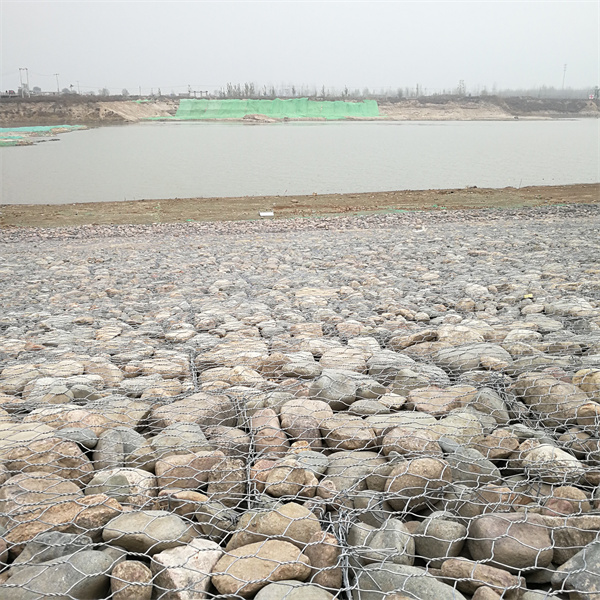Dek . 11, 2024 23:26 Back to list
gabion garden wall factory
The Rise of Gabion Garden Walls A Sustainable Solution for Modern Landscapes
In recent years, the construction and design industry has seen a significant shift towards more sustainable and environmentally friendly practices. Among these trends, gabion walls have emerged as a popular choice for both residential and commercial landscaping projects. A gabion garden wall, constructed from wire cages filled with stones, offers a unique blend of aesthetic appeal and structural integrity, making it an ideal solution for modern gardens and outdoor spaces.
What Are Gabion Walls?
Gabion walls are essentially steel cages filled with natural stones or other materials. The term gabion originates from the Italian word gabbione, meaning big cage. Traditionally used for erosion control in civil engineering, gabions have found their way into landscaping as an attractive and functional option for retaining walls, garden borders, and decorative features.
The versatility of gabion walls lies in their design; they can be tailored to fit any space or style. From rustic to contemporary, the choice of stones allows homeowners and designers to create a look that complements the surrounding landscape. Popular stone options include river rocks, crushed granite, and even recycled materials, further enhancing their eco-friendly credentials.
Benefits of Gabion Garden Walls
1. Sustainability One of the most notable advantages of gabion walls is their minimal environmental impact. The materials used—often locally sourced stones—help reduce the carbon footprint associated with transportation. Additionally, gabions are permeable, allowing water to flow through, which reduces runoff and prevents soil erosion.
2. Durability Gabion structures are incredibly durable. The steel cages withstand harsh weather conditions, while the stone infill is resistant to decay and degradation. This longevity makes gabion walls a wise investment, as they require little maintenance and can last for decades.
gabion garden wall factory

3. Aesthetic Flexibility Gabion walls can be designed to suit any aesthetic preference. Homeowners can choose from a variety of stone types, colors, and sizes to create a visually appealing structure that enhances their garden or yard. The natural look of stone complements plant life beautifully, providing a seamless integration between hardscaping and landscaping.
4. Cost-Effectiveness Compared to traditional masonry walls, gabion walls can be a more cost-effective solution. The assembly is relatively straightforward, reducing labor costs, and the materials used are often less expensive than bricks or concrete.
5. Versatile Applications Gabion walls are not limited to just one application. They can serve as retaining walls to stabilize soil on sloped properties, decorative features that create striking visual contrasts, or planters that allow for the integration of a variety of plants. This versatility means that more homeowners are considering gabion walls for their landscaping needs.
Building a Gabion Wall
For those interested in constructing a gabion garden wall, the process is surprisingly simple. The first step involves designing the wall’s dimensions and selecting the appropriate location, ensuring it is level and secure. Next, the wire cages are assembled using galvanized steel, which prevents rusting and degradation. Once the cages are in place, they are filled with chosen stones, compacting them as needed for stability. Finally, finishing touches such as planting greenery or integrating outdoor lighting can enhance the wall’s functionality and charm.
Conclusion
In conclusion, gabion garden walls represent a sustainable and stylish option for modern landscaping. With their numerous benefits—ranging from ecological advantages to aesthetic flexibility—they are an attractive choice for anyone looking to enhance their outdoor space. As the demand for sustainable building practices continues to grow, gabions are poised to become an increasingly prevalent feature in gardens worldwide. Whether as a functional structure or an eye-catching landscape element, gabion walls undoubtedly reflect the future of environmentally conscious design in outdoor spaces.
-
Why PVC Coated Gabion Mattress Is the Best Solution for Long-Term Erosion Control
NewsMay.23,2025
-
Gabion Wire Mesh: The Reinforced Solution for Modern Construction and Landscape Design
NewsMay.23,2025
-
Gabion Wall: The Flexible, Seismic-Resistant Solution for Modern Landscaping and Construction
NewsMay.23,2025
-
Gabion Wall Solutions: The Durable, Decorative, and Affordable Choice for Every Landscape
NewsMay.23,2025
-
Gabion Basket: The Durable and Flexible Alternative to Traditional Retaining Walls
NewsMay.23,2025
-
Gabion Basket: The Proven Solution for Slope Stability and Flood Control
NewsMay.23,2025
-
Versatility of Chain Link Fence Gabion
NewsMay.13,2025






